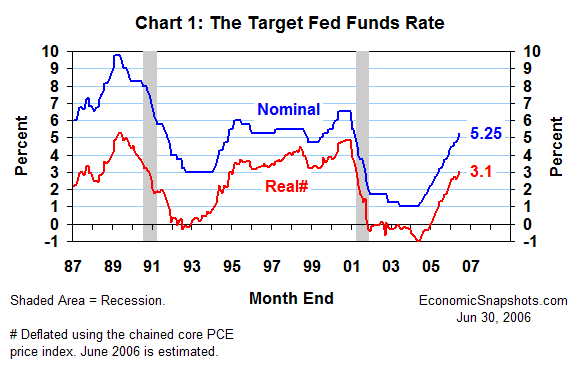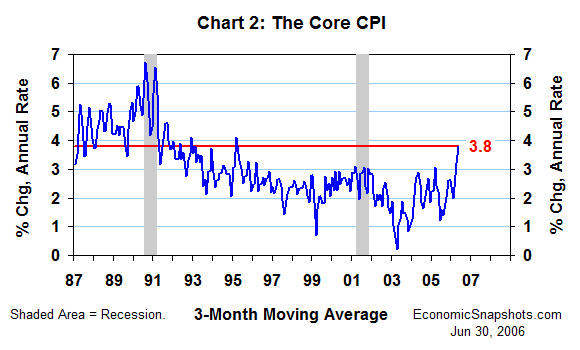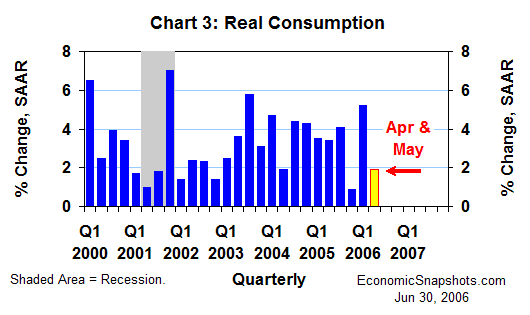
| Back to Index |
June 30, 2006 – The FOMC voted yesterday (Thursday) to raise its Fed funds target by 25 basis points to 5.25% (Chart 1). The FOMC has raised its Fed funds target by 25 basis points at each of its last seventeen regular policy meetings.

According to the FOMC’s post-meeting policy statement, “Readings on core inflation have been elevated in recent months.” This is the FOMC’s way of telling us that it continues to be unhappy with the latest inflation data (such as the rising trend in core CPI growth in the data through May, Chart 2).

Fed Chairman Bernanke indicated in early June (before the May CPI data were released), that recent trends in core inflation had reached or exceeded the upper limits of FOMC members’ comfort zones.
Further, even after yesterday's tightening action, “The Committee judges that some inflation risks remain.” In particular, FOMC members are afraid that “the high levels of resource utilization and of the prices of energy and other commodities have the potential to sustain inflation pressures”.
However, the latest data also suggest that “economic growth is moderating from its quite strong pace earlier this year”, and “the moderation in the growth of aggregate demand should help to limit inflation pressures over time.”
Thus, “The extent and timing of any additional firming that may be needed to address these [inflation] risks will depend on the evolution of the outlook for both inflation and economic growth, as implied by incoming information.”
According to the BEA’s final Q1 estimates, real GDP rose at an unsustainably strong 5.6% annual rate in Q1, with a 5.1% leap in real consumption accounting for roughly two-thirds of that GDP growth. However, based on the slowing in the monthly consumer spending indicators through April, Fed Chairman Bernanke asserted in early June that the economy was undergoing a consumer-led transition to a “sustainable” real GDP trend (about 3% to 3.5%) in Q2.
The May data (released today) show real consumption growth slowing to a 1.9% annual rate for the first two months of Q2, compared to its Q1 average (Chart 3). A 1.9% real consumption gain for all of Q2 would yield growth averaging 3.5% per quarter in the first half of this year, and 3% per quarter for four quarters through Q2 – in line with the FOMC’s criteria for “sustainable” economic growth.

Bottom line: If real consumption growth continues on a “sustainable” trend and the inflation indicators don’t get any worse, the FOMC might be ready for an extended pause in its tightening program.
Suzanne Rizzo